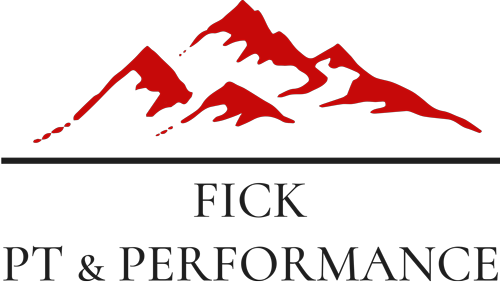Back in 1978, a physician by the name of Dr. Gabe Mirkin first coined the acronym RICE (Rest, Ice, Compression, Elevation). Ice has been a common resource for injury management, as clinicians believed for many years that ice would help reduce swelling, inflammation, and pain. Flash forward to 2014 when Dr. Gabe Mirkin acknowledged that 36 years of cumulative research demonstrated that ice was not as effective as once believed, and he renounced the use of ice as a part of the acute injury management paradigm.
In the past, ice was used as a very basic and accessible analgesic. People have historically turned to ice as the first resource to alleviate their pain. When ice is applied, it cools the local tissue temperature resulting in decreased blood flow to the area, thereby reducing inflammation, metabolism, pain, muscle elasticity and even muscle spasms. This was previously considered to be a beneficial cascading effect. While ice may still be beneficial for in certain cases, the fact that ice decreases inflammation and metabolism raises some concerns.
To begin the recovery process, injured tissue requires tissue healing cells that are delivered to the tissue during a 24–72-hour window of initial inflammation. These “healing cells” are called macrophages, and they release a hormone called Insulin-like Growth Factor (IGF-1), which is crucial for the beginning stages of cellular healing. Recent literature suggests using ice may, in fact, decrease the delivery of macrophages and IGF-1 to local cells and in turn affect the body’s natural healing process in a negative way.
With that information in mind, do we automatically eliminate ice from the injury management plan all together? In our opinion, the answer is no. We need to keep in mind that ice can still help us manage our pain acutely instead of relying on other forms of pain management such as over the counter anti-inflammatory medications and opioids. As soon as we can get acute pain under control, we like to follow the acronym known as PEACE and LOVE.
What is PEACE and LOVE? In 2019 the British Journal of Sports Medicine proposed a new acronym for the management of soft tissue injuries: PEACE and LOVE(Dubois and Esculier, 2019). This acronym covers the whole recovery process from immediate care (PEACE) to subsequent management (LOVE). This is a change from the RICE method because RICE only focuses on the acute management of soft tissue injuries and does not really provide any information on what to do after the first couple of days. On the other hand, PEACE and LOVE covers the whole recovery basis from immediate care (PEACE) to subsequent management (LOVE).
In the first 72 hours, we recommend implementing the PEACE strategy for acute injuries:
- P: Protect
We want to start by unloading the tissues in a pain free manner in the first 24-72 hours after any initial soft tissue injury to help reduce any risk of causing more local tissue damage. Does this mean we stop moving altogether? No, unless the pain is so severe that you physically cannot move. We want you to have as much pain free motion as possible.
- E: Elevate
We recommend elevating the injured limb above the level of your heart to help decrease the amount of swelling that may occur at the site of the injured tissue. For example, keeping your leg raised up on a pillow after an ankle sprain will help to decrease swelling.
- A: Avoid
You should avoid anti-Inflammatories. Seems counter-intuitive, doesn’t it? Quite the opposite. It is crucial to allow a healthy amount of inflammation to occur at the site of the injured tissue in the first 24-72 hours after injury. Taking anti-inflammatory medications can disrupt our normal healthy response to injury, and they do the opposite of what our tissues need.
- C: Compress
External compression of injured tissue creates an environment that helps to limit swelling or edema at the site of injury. Various compression styles include ace bandage wraps, compression sleeves, or intermittent compression devices such as the Hyperice Normatec compression boots.
- E: Educate
Education is one of the most important pieces of your recovery process. It is important for us as physical therapists to provide our patients with education regarding the tissue healing timelines, reasons behind our plan of care, and what you can expect as a patient regarding your return from injury.
After the first 72 hours, we move onto the second half of the acronym, which is LOVE:
- L: Load
Injuries respond very well to loading with exercise and general movement. Our cells within soft tissue speak the language of load. We can load tissues in a safe manner with optimal exercise prescription based on the severity of the injury and tissue healing timelines.
- O: Optimism
Injuries can take a toll not only on our physical health, but also on our mental health. Our brain plays a powerful roll in how we perceive pain and how we catastrophize threats to our bodies. A positive and optimistic mindset can play a big role in your recovery from your injury.
- V: Vascularization
We need adequate blood flow to our injured tissues to heal the way we all want. There are times we are unable to move our injured limb due to too much pain, but incorporating modified cardiovascular exercise is a great way to increase blood flow throughout the body and to our injured tissues even if that limb isn’t directly involved.
- E: Exercise
EXERCISE IS KEY! Simply resting your soft tissue injury for multiple days/weeks will likely be disadvantageous to your body in the long run. We need properly dosed exercise to safely return to activity and to recover from injury as quickly and safely as possible.
Our Physical Therapists at Fick PT & Performance have the knowledge and experience to help you safely recover from injury, return to sport, help you reduce future injury risk. If you have already experienced an injury and are looking for pain relief, contact us for more information on how we can help you out.

